Introduction To Mulberries: A Delicious And Nutritious Fruit
Mulberries are a delicious and nutritious fruit that have been enjoyed for centuries. With a sweet and slightly tart flavor, these small berries pack a punch when it comes to health benefits. They come in a variety of colors, including black, white, and red, and each type offers its own unique taste and nutritional profile. If you’re looking to add some variety to your diet, mulberries are a great choice.
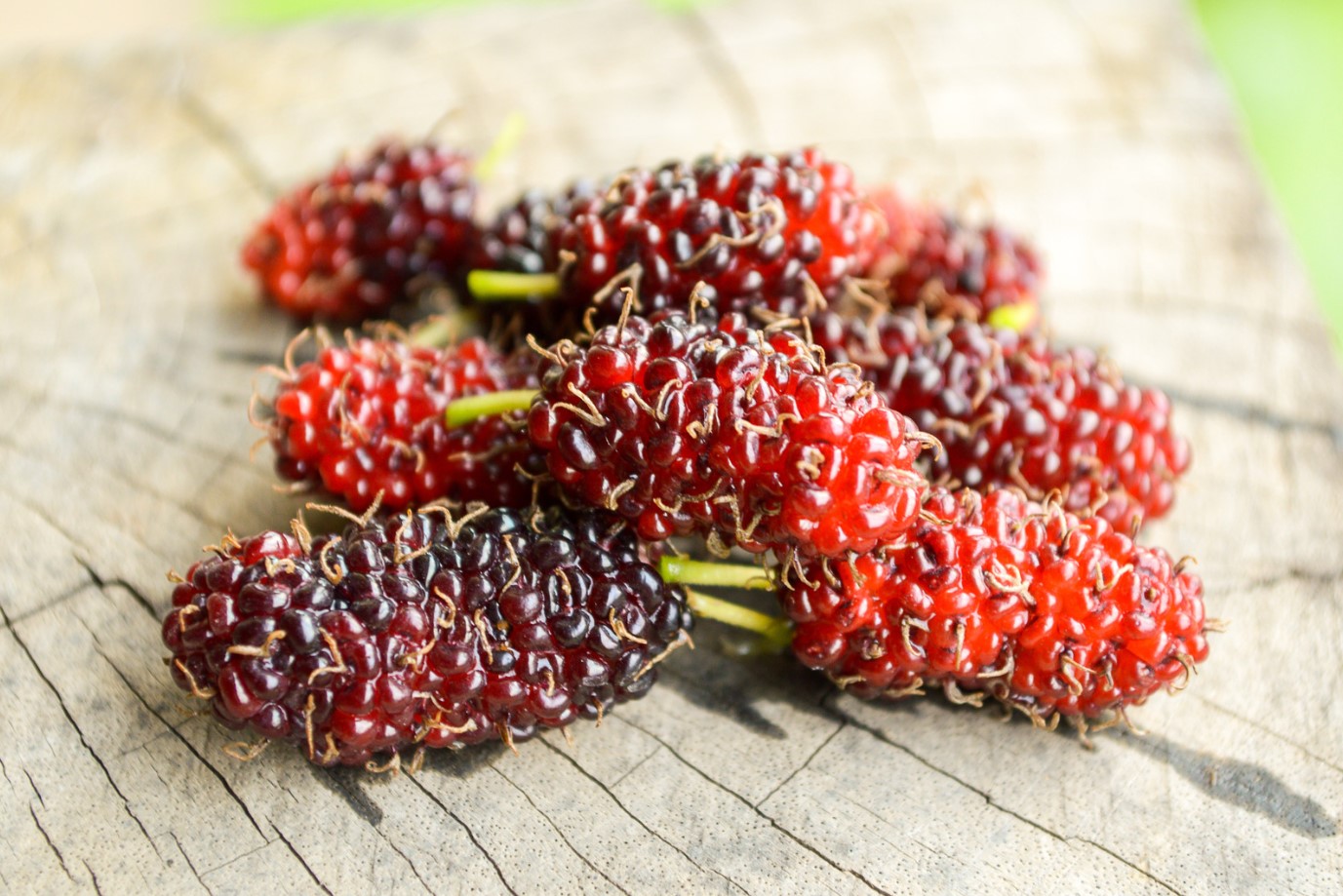
One of the best things about mulberries is their versatility. They can be eaten fresh or dried, added to smoothies or baked goods, and even turned into jams and syrups. They’re also high in fiber, which can help keep you feeling full and satisfied, as well as vitamin C and iron. Plus, studies have shown that mulberries may have several health benefits, including improving blood sugar and cholesterol levels.
- Black mulberries
- White mulberries
- Red mulberries
While mulberries may not be as well-known as other fruits like apples and bananas, they have a rich history that dates back thousands of years. Originating in ancient China, mulberries were prized for their medicinal properties as well as their use in silk production. Today, they’re enjoyed all over the world and can be found in many different culinary traditions.
| Fiber: | 1 gram per 10 berries |
| Vitamin C: | 14% of the Daily Value (DV) per 10 berries |
| Iron: | 2% of the DV per 10 berries |
In traditional medicine, mulberries have been used to treat a variety of ailments, from boosting the immune system to aiding in digestion. They’ve also been studied for their potential anti-inflammatory and anti-cancer properties. While more research is needed to fully understand the benefits of mulberries, they’re certainly a fruit worth adding to your diet.
Whether you’re a fan of sweet or savory dishes, mulberries can be incorporated into a variety of recipes. From mulberry crumbles to mulberry-glazed pork chops, the possibilities are endless. Plus, if you’re feeling adventurous, you can even try growing mulberries at home.
In conclusion, mulberries are a delicious and nutritious fruit that offer a range of health benefits. Whether you’re looking to improve your diet or simply add some variety to your meals, mulberries are a great choice. So why not give them a try today?
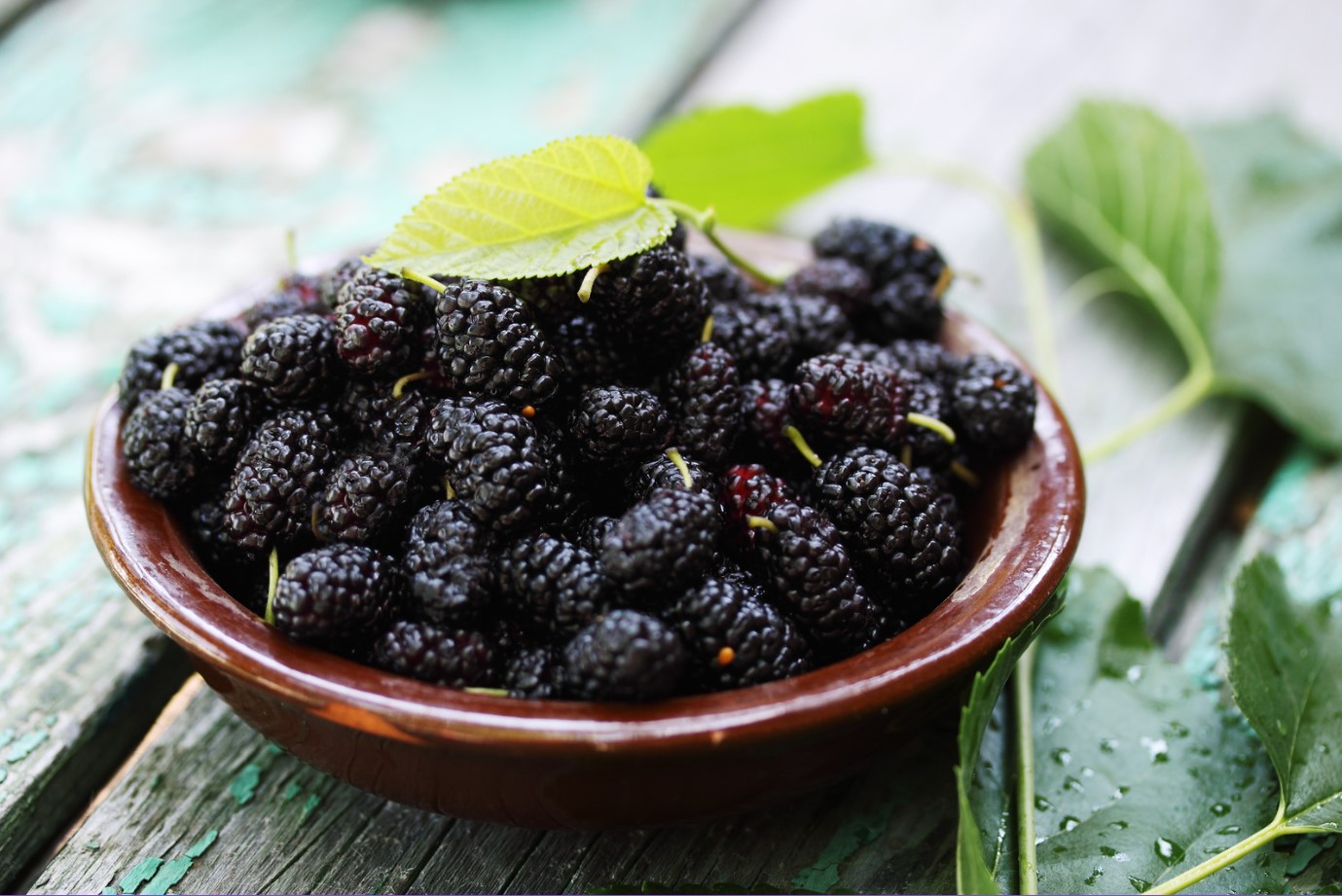
Mulberry’s Health Benefits: Improving Blood Sugar And Cholesterol Levels
Mulberries are not only delicious, but they also offer a wide range of health benefits, especially when it comes to blood sugar and cholesterol levels. These small, sweet fruits are packed with essential nutrients and powerful antioxidants that can help prevent and manage various health conditions. Here are some of the key health benefits of mulberries:
-
- Regulating Blood Sugar
Mulberries have a low glycemic index, which means they can help regulate blood sugar and insulin levels. They contain compounds that inhibit the breakdown of carbohydrates into glucose, which can prevent sudden spikes and crashes in blood sugar. This makes mulberries particularly beneficial for people with diabetes or those at risk of developing the condition.
-
- Lowering Cholesterol Levels
Studies have shown that mulberries can help reduce cholesterol levels, particularly LDL (“bad”) cholesterol. This is due to the high fiber content of mulberries, which can bind with cholesterol and remove it from the body. Mulberries also contain compounds called flavonoids, which have been shown to have cholesterol-lowering effects.
-
- Preventing Chronic Diseases
Mulberries are rich in antioxidants, which can help protect against the damaging effects of free radicals and oxidative stress. This can help prevent chronic diseases such as cancer, heart disease, and neurodegenerative disorders. The flavonoids and resveratrol in mulberries are particularly potent antioxidants.
-
- Improving Digestive Health
The fiber in mulberries can also help improve digestive health by promoting regularity and preventing constipation. Mulberries also contain prebiotics, which are compounds that feed the beneficial bacteria in the gut, promoting a healthy microbiome. This can help boost immunity and prevent digestive issues.
If you want to reap the health benefits of mulberries, there are many ways to incorporate them into your diet. You can eat them fresh, dried, or cooked in a variety of sweet and savory dishes. You can also find mulberry supplements and extracts in health food stores. However, it’s important to note that mulberries are not a miracle cure for any health condition, and should be consumed as part of a healthy, balanced diet.
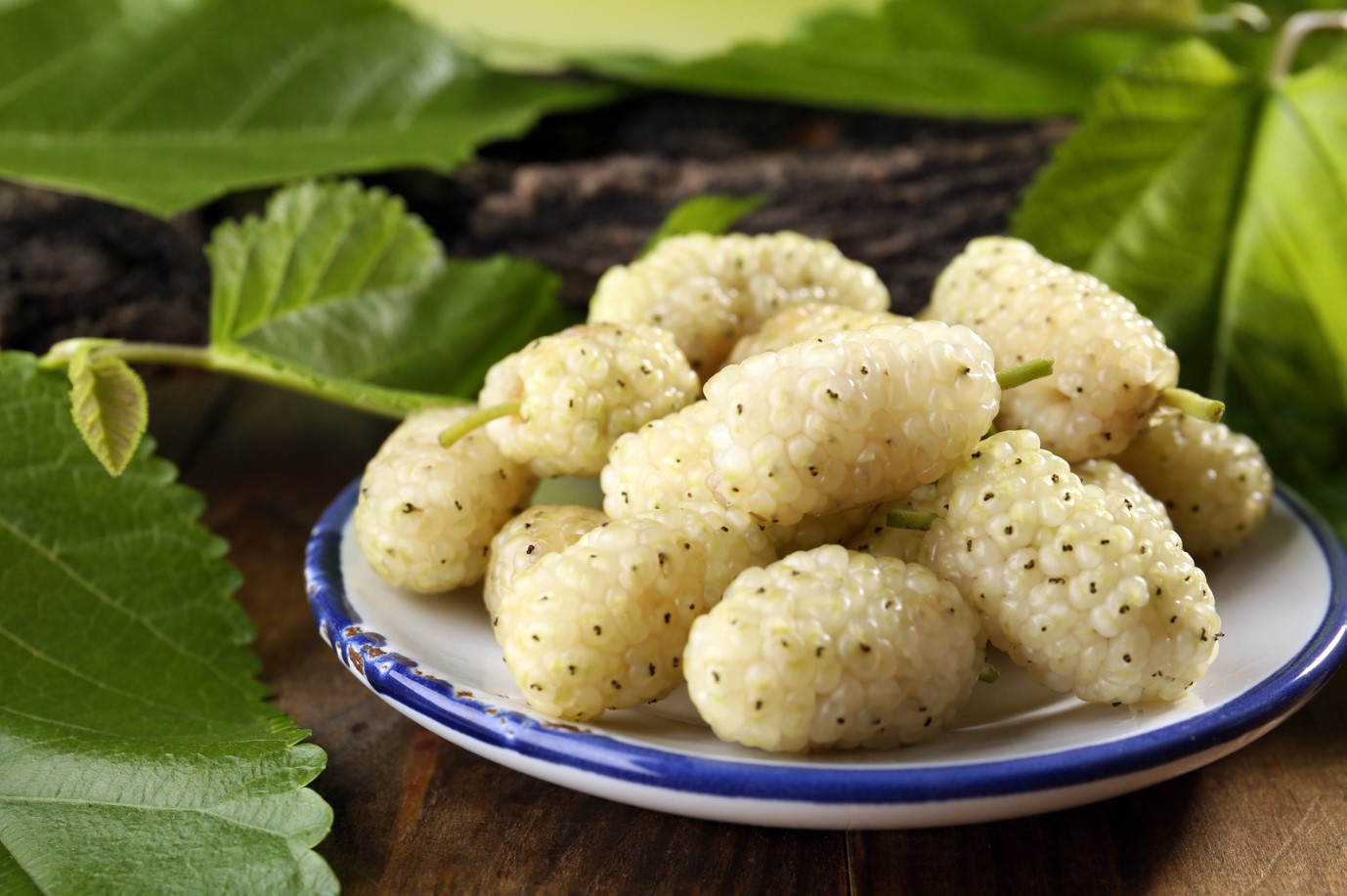
The History Of Mulberries: From Ancient China To Modern Times
Mulberries have a rich and vibrant history that is steeped in tradition and legend. Dating back to ancient China, this delicious and nutritious fruit has been prized for its medicinal properties, as well as its culinary uses. Over the centuries, mulberries have been cultivated in many different countries and have played an important role in the economies of many regions.
In ancient China, mulberry trees were cultivated for their leaves, which were used as food for silkworms. This was an important industry, as silk production was a major part of the Chinese economy. Mulberries were also used as a medicinal herb, and Chinese herbalists used them to treat a range of ailments, including coughs, colds, and fevers.
- In Greece, mulberry leaves were used to feed silkworms, just like in China.
- In ancient Rome, mulberries were a symbol of luxury and were often served at banquets for wealthy citizens.
- During the Middle Ages, mulberries were widely cultivated in Europe, and were used as a food source for both people and animals.
As mulberries spread around the world, they took on different cultural meanings and became associated with different traditions and folklore. For example, in some parts of Europe, it was believed that if you planted a mulberry tree, you would have good luck and prosperity. In England, it was believed that mulberries were a cure for the common cold, and that eating mulberries could help you live longer.
| Country | Mulberry Legend |
|---|---|
| China | Mulberry leaves were used to feed silkworms and mulberry trees were considered sacred. |
| Greece | Mulberry leaves were used to feed silkworms, just like in China. |
| England | Mulberries were believed to be a cure for the common cold and could help you live longer. |
| Italy | Mulberries were a symbol of beauty and were often used in art and literature. |
Today, mulberries are enjoyed all over the world, and are prized for their sweet, juicy flavor and their many health benefits. From ancient China to modern times, the history of mulberries is a story of culinary and medicinal innovation, cultural significance, and timeless appeal. Whether you enjoy them fresh off the tree, or in a delicious jam, syrup, or supplement, mulberries are a fruit that will always be treasured and appreciated.
Different Types Of Mulberries: Black, White, And Red Varieties
When it comes to mulberries, most people picture small, juicy, dark fruit that pops in your mouth. However, there are various types of mulberries grown around the world, each with its own unique characteristics. In this blog post, we’ll explore the different types of mulberries and what sets them apart from one another.
Black Mulberries
Black mulberries are perhaps the most well-known of the bunch, and for good reason. They boast a rich flavor that’s often compared to that of blackberries, with a hint of tartness. As their name suggests, black mulberries are generally black or deep purple in color, and they’re commonly used to make jams, wines, and syrups. Black mulberries are native to western Asia and the Middle East, but they’re now cultivated around the world.
White Mulberries
White mulberries, also known as ‘Morus alba’, contrast their name with their actual color, which is pink or reddish. The flavor of white mulberries is more delicate and slightly sweet, and they have a crisper texture than black mulberries. White mulberries have been produced in China for over four millennia, and only a few centuries ago, they were exported to Europe.
Red Mulberries
The red mulberry (Morus rubra) is native to North America and is named for its reddish fruit. These are sweeter than black mulberries and ten to become a reddish-black color when ripe. Red mulberries have been used in a similar way to black mulberries and can also be eaten fresh or dried in small quantities. They vary in size, but they are generally the largest type of mulberry.
Conclusion
The different mulberry types highlight the variety and diversity of the plant. While black mulberries may be the most well-known, white and red varieties are becoming more popular due to their unique flavors and nutritional profiles. Regardless of which type you choose, mulberries are a delicious and nutritious fruit that offer numerous health benefits. Incorporate them into your diet today!
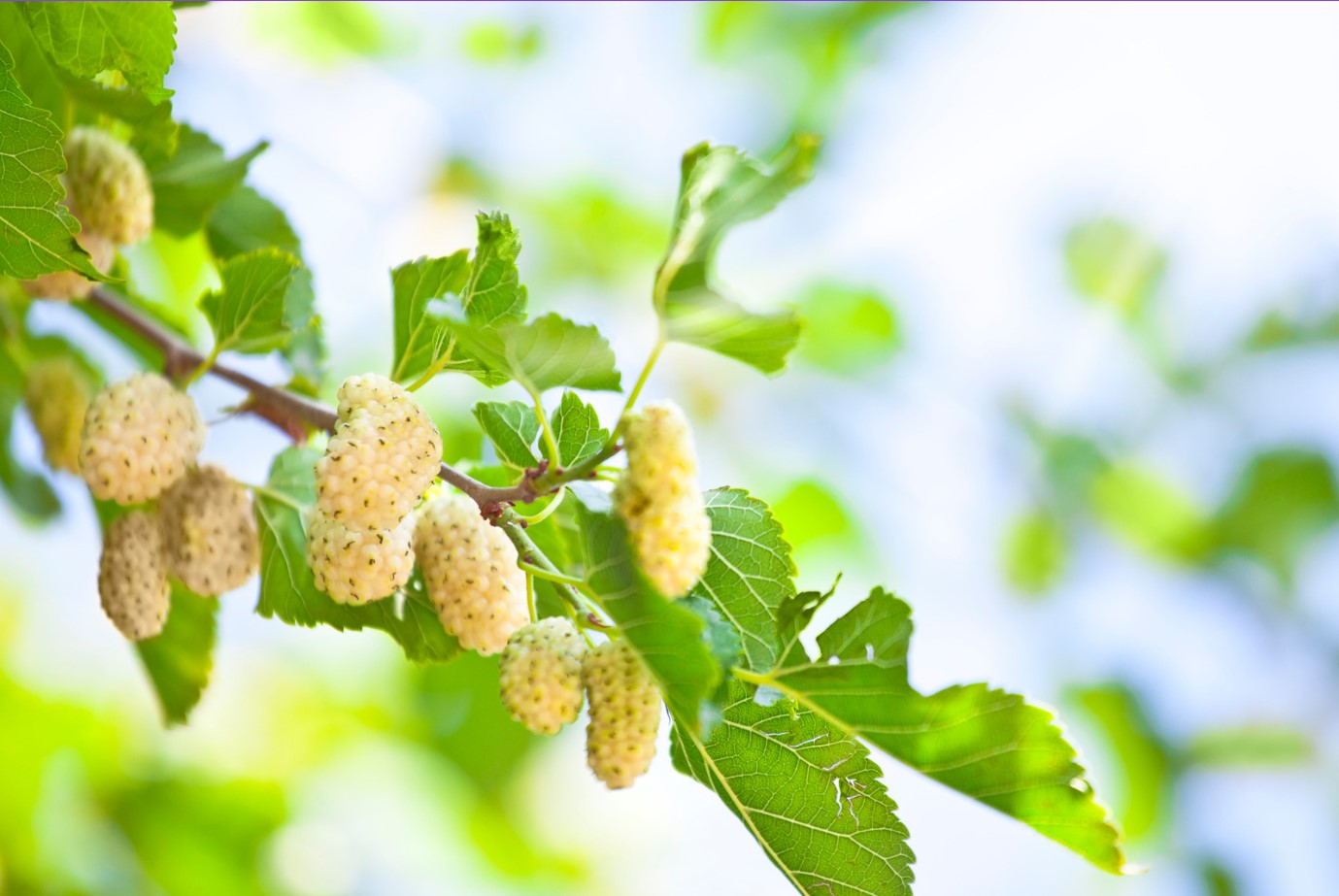
Mulberry’s Nutritional Profile: High İn Fiber, Vitamin C, And Iron
Mulberries are a delicious and healthy fruit that can provide a variety of nutritional benefits. In fact, mulberries are high in several important vitamins and minerals, such as fiber, vitamin C, and iron. These nutrients play crucial roles in maintaining overall health and can help improve digestion, boost the immune system, and promote healthy skin and hair.
One of the key benefits of mulberries is their high fiber content. Fiber is an essential nutrient that helps promote healthy digestion and can also help regulate blood sugar levels. In fact, mulberries are particularly high in soluble fiber, which has been shown to lower cholesterol levels and reduce the risk of heart disease.
- Another important nutrient found in mulberries is vitamin C. This powerful antioxidant helps protect the body against disease and can also help improve the appearance of skin and hair. Additionally, vitamin C can help boost the immune system and promote wound healing.
- In addition to fiber and vitamin C, mulberries are also a good source of iron. Iron is an essential mineral that helps transport oxygen throughout the body and plays a crucial role in maintaining healthy energy levels. Iron deficiency can lead to fatigue, weakness, and a variety of other health problems.
If you’re looking for a healthy and nutritious snack, mulberries are a great option. Whether you eat them on their own or incorporate them into your meals or snacks, mulberries can provide a variety of important vitamins and minerals that can help keep you healthy and feeling great.
| Fiber | Vitamin C | Iron |
| 1 cup (140g) of mulberries contains 2.4g of fiber | 1 cup (140g) of mulberries contains 61% of the daily recommended value of vitamin C | 1 cup (140g) of mulberries contains 9% of the daily recommended value of iron |
- Mulberries are a great source of fiber, which can help promote healthy digestion and reduce the risk of heart disease.
- Vitamin C is an important nutrient found in mulberries that can help improve the appearance of skin and hair and boost the immune system.
- Iron is another essential nutrient found in mulberries that can help maintain healthy energy levels and transport oxygen throughout the body.
- If you’re looking for a healthy and nutritious snack, mulberries are a great option that can provide a variety of important vitamins and minerals.
Mulberry’s Role İn Traditional Medicine: Treating Various Ailments
Mulberries have been used for medicinal purposes for thousands of years, especially in traditional Chinese medicine. They have been known to treat many ailments such as coughs, colds, and fevers. They are a great source of nutrients and antioxidants, which help to boost the immune system and stimulate the body’s natural healing process. In this blog post, we will explore the various ways mulberries have been used in traditional medicine.
One of the most common uses of mulberries in traditional medicine is to treat constipation. Mulberries are high in fiber which helps to regulate bowel movements and keep the digestive system healthy. They also contain natural laxatives which can help to relieve constipation and promote healthy digestion.
In addition to their digestive benefits, mulberries have also been used to treat respiratory conditions such as asthma, bronchitis, and coughs. The leaves of the mulberry plant have been used for centuries to treat these conditions due to their anti-inflammatory properties. They can help to reduce inflammation in the airways and improve breathing.
Mulberries have also been used to treat high blood pressure and cholesterol. They contain resveratrol, a natural compound that has been found to lower blood pressure and improve cholesterol levels. Resveratrol is also known for its anti-inflammatory and anti-aging properties.
| Health Benefit | Mulberry Component |
|---|---|
| Regulating bowel movements | Fiber and natural laxatives |
| Treating respiratory conditions | Anti-inflammatory properties in leaves |
| Lowering blood pressure and cholesterol | Resveratrol |
Mulberries are also known to be beneficial for the skin. They contain antioxidants that can help to protect the skin from damage caused by free radicals, which can lead to premature aging. Mulberries can also help to reduce the appearance of dark spots and blemishes on the skin, making it a great natural remedy for acne.
Overall, mulberries have many health benefits and have been used in traditional medicine for thousands of years. They are a natural and effective way to treat many common ailments and can be a great addition to a healthy diet. So why not add some mulberries to your next meal or try some mulberry tea to reap the benefits of this amazing fruit?
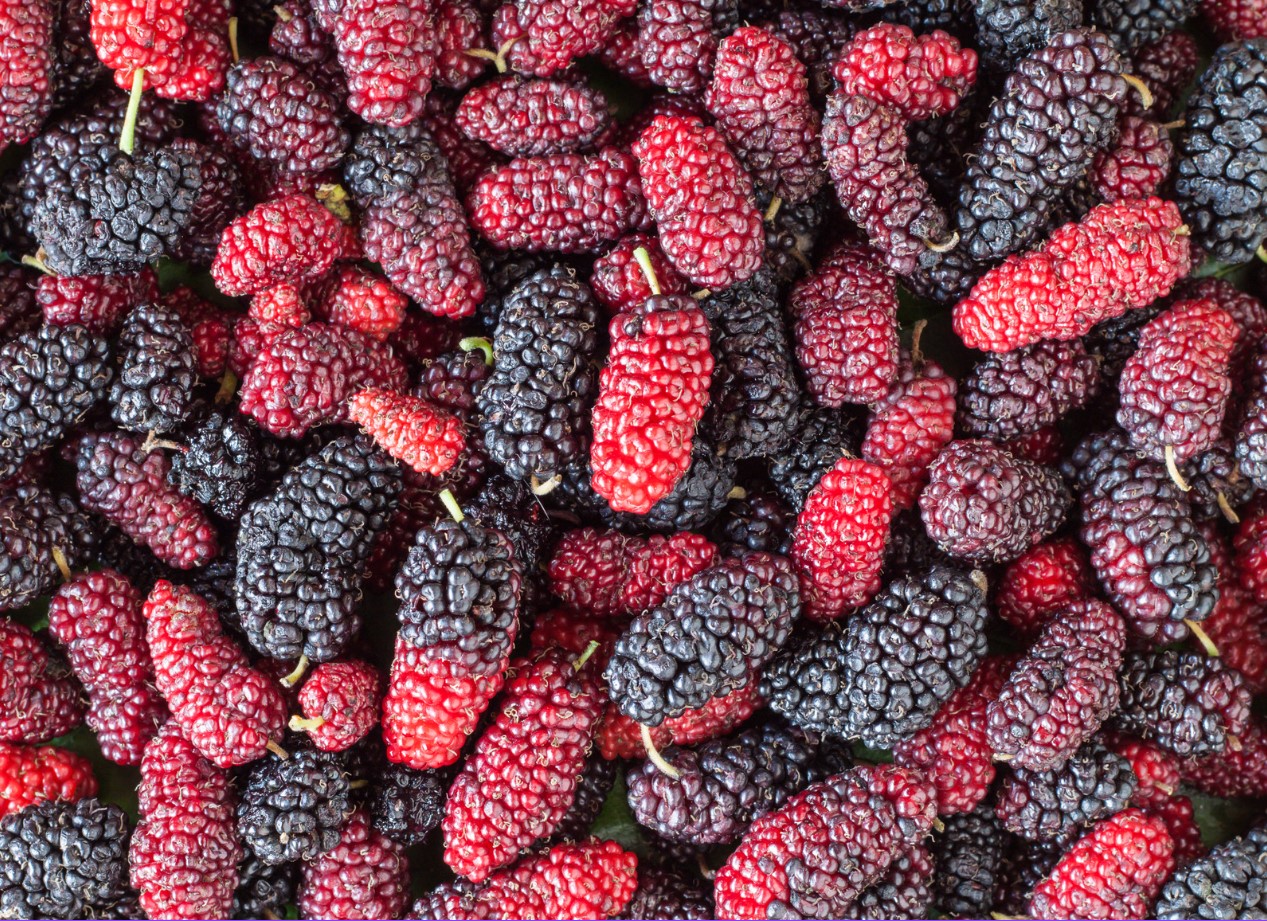
Mulberry’s Culinary Uses: Recipes For Sweet And Savory Dishes
Mulberries are not just delicious and nutritious, but also versatile in their culinary uses. From sweet desserts to savory dishes, these berries can add a unique flavor and texture to your meals. Here are some recipes to try at home:
- Mulberry and goat cheese crostini: Toast slices of baguette and spread goat cheese on top. Add fresh mulberries and a drizzle of honey for a delicious appetizer.
- Mulberry salsa: Combine chopped mulberries, diced red onion, jalapeno, cilantro, and lime juice for a fresh and tangy salsa to pair with grilled meats or chips.
- Mulberry crumble: Mix fresh mulberries with sugar and cornstarch, and top with a buttery streusel for a classic dessert.
If you’re feeling adventurous, you can also experiment with adding mulberries to your smoothies, salads, or marinades. The possibilities are endless!
| Sweet Recipes | Savory Recipes |
|---|---|
| Mulberry pie | Mulberry BBQ sauce |
| Mulberry muffins | Mulberry and brie grilled cheese |
| Mulberry sorbet | Mulberry and quinoa salad |
Not only do these recipes taste great, but they also provide the nutritional benefits of mulberries. With high levels of fiber, iron, and vitamin C, mulberries are a healthy addition to any diet. So why not give them a try in your next meal?
Growing Mulberries At Home: Tips And Tricks For A Successful Harvest
Mulberries are delicious and nutritious fruits that are grown all around the world. These berries are not only tasty, but they are also high in nutrients like fiber, vitamin C, and iron. One of the best things about mulberries is that you can grow them at home with relative ease. Whether you are an experienced gardener or just starting out, there are some basic tips and tricks that can help you produce a successful mulberry harvest.
-
- Choose the Right Variety:
Before you start growing mulberries, it is important to choose the right variety for your climate and soil type. There are several different types of mulberries, including black, white, and red varieties. Each type has its own unique flavor and nutritional profile, so it is a good idea to do some research and find the best variety for your area.
-
- Plant in the Right Location:
Once you have chosen your mulberry variety, you need to find the right location to plant your tree. Mulberries like well-drained soil and full sunlight, so make sure you choose a spot that gets plenty of both. If you live in a hot climate, it is a good idea to plant your tree in a spot that gets some afternoon shade to prevent sun scorch.
-
- Watering and Fertilizing:
Mulberries are relatively low-maintenance trees, but they do require regular watering and fertilizing to produce a healthy crop. Water your tree deeply once a week, and make sure the soil stays evenly moist. You can also give your tree a boost with regular fertilization using a balanced fertilizer.
-
- Harvesting:
The best time to harvest mulberries is when they are ripe and juicy. Depending on the variety, this can be anywhere from late spring to mid-summer. To harvest your berries, gently pull them off the tree using your fingers. Be careful not to crush the fruit, as this can cause it to spoil.
With these basic tips and tricks, you can successfully grow mulberries at home and enjoy a bountiful harvest of these delicious and nutrient-rich fruits. Whether you eat them fresh or use them in your favorite recipes, mulberries are a wonderful addition to any home garden.
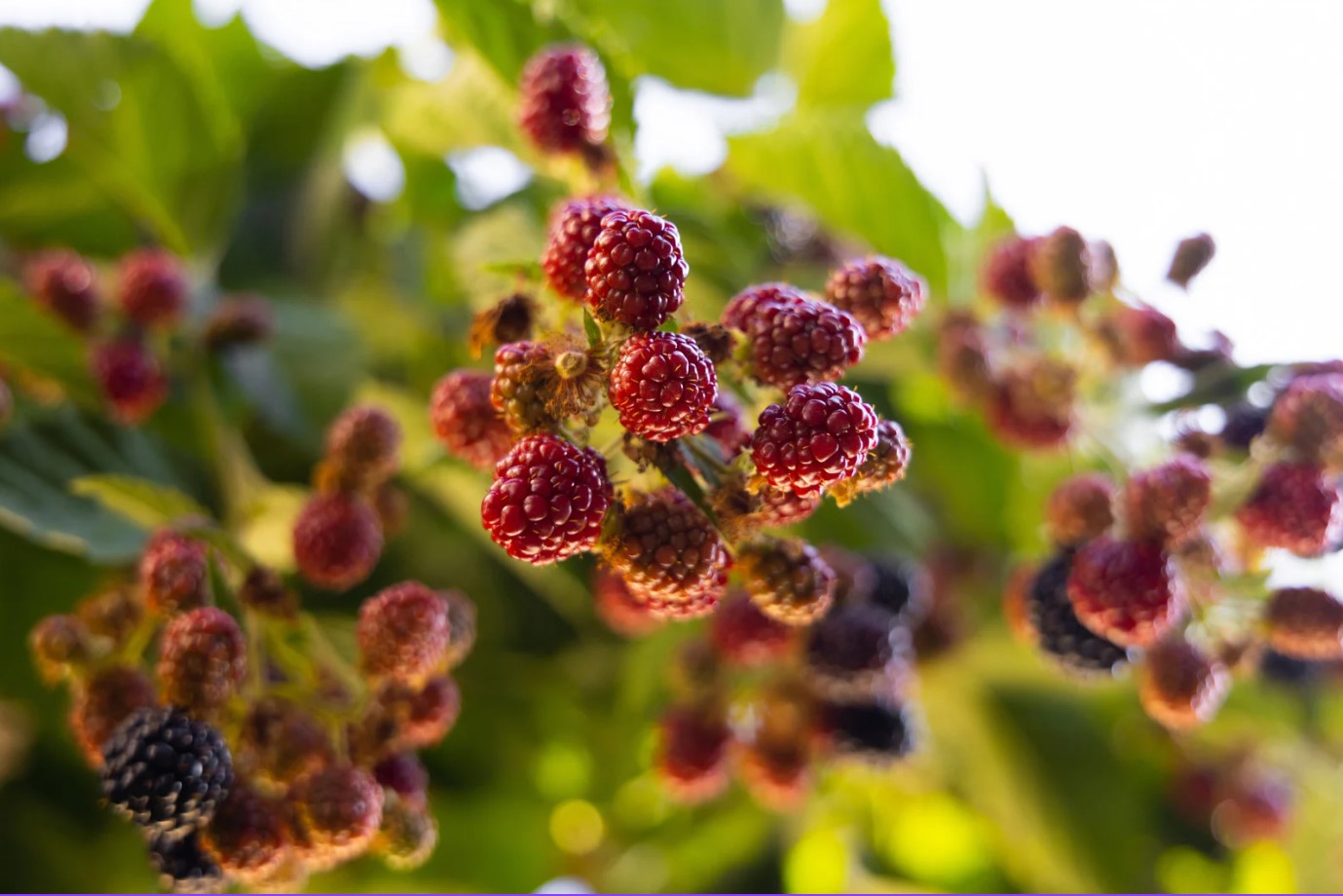
Mulberry’s Environmental Impact: A Sustainable And Eco-Friendly Crop
Mulberry trees have been grown for centuries for their delicious fruits as well as their leaves, which are used to feed silkworms. But did you know that mulberries are also a sustainable and eco-friendly crop? In this blog post, we will explore the environmental impact of mulberry trees and why they are a great addition to any garden or farm.
Firstly, let’s talk about mulberry trees and their impact on the soil. Mulberry trees have a deep root system, which allows them to reach nutrients and water deep in the soil. This means that they require less water and fertilizer than other crops, making them a great choice for sustainable agriculture. The trees also have the ability to improve soil quality, as their root systems create channels in the soil that allow for better aeration and drainage.
- Some other reasons that make mulberry tree a sustainable and eco-friendly crop:
- Mulberry trees have a long lifespan, which means that they don’t need to be continuously replanted.
- The tree also has a low impact on the surrounding environment, as it doesn’t require high amounts of energy or create much pollution during production.
- The fruits produced by mulberry trees are also highly nutritious and can be eaten fresh or used in a variety of recipes. This means that the trees can provide a sustainable food source for communities around the world.
In addition to their environmental benefits, mulberry trees have also been used in traditional medicine for centuries. The leaves of the tree contain compounds that can lower blood sugar and cholesterol levels, making them a great choice for individuals with diabetes or heart disease.
| Mulberry’s Environmental Impact | Mulberry’s Nutritional Profile | Mulberry’s Culinary Uses |
|---|---|---|
| Deep root system improves soil quality and reduces water and fertilizer usage. Long lifespan means they don’t need to be replanted often. | High in fiber, vitamin C, and iron. Leaves contain compounds that lower blood sugar and cholesterol levels. | Can be eaten fresh, used in jams and syrups, or as a flavoring in savory dishes. |
In conclusion, mulberry trees are a sustainable and eco-friendly crop that not only provide delicious fruits and leaves for silkworms but also have many nutritional and medicinal benefits. By planting a mulberry tree in your garden, you can help reduce your carbon footprint and improve the health of the soil in your community.
Mulberry Products: Jams, Syrups, And Supplements
Mulberries are a versatile fruit that can be used to create a variety of products. Jams, syrups, and supplements are just a few of the many ways this fruit can be enjoyed. Here, we will explore the different types of mulberry products available and how they can benefit your health.
Jams: Mulberry jam is a delicious spread that can be enjoyed on bread, toast, pastries, and more. It is made by cooking mulberries with sugar and pectin until it reaches a thick, spreadable consistency. Mulberry jam is high in antioxidants and vitamins, making it a healthy and tasty addition to any breakfast or snack.
- Black mulberry jam is the most common type, with a deep color and robust flavor.
- White mulberry jam is less common, with a milder, sweeter flavor.
Syrups: Mulberry syrup is a sweet liquid that can be used to flavor drinks, desserts, and more. It is made by cooking mulberries with sugar and water until the fruit breaks down and the liquid thickens. Mulberry syrup is high in vitamin C and antioxidants, making it a healthy alternative to traditional sweeteners.
- Black mulberry syrup has a richer, more complex flavor than white mulberry syrup.
- White mulberry syrup is lighter in color and flavor, with a sweeter taste similar to honey.
Supplements: Mulberry supplements are a convenient way to enjoy the health benefits of mulberries without having to eat the fruit itself. They are available in capsule or powder form and can be found at most health food stores. Mulberry supplements are high in fiber, vitamin C, and antioxidants, making them a great addition to any diet.
| Type of Mulberry | Uses |
|---|---|
| Black | Commonly used to make jams, syrups, and supplements |
| White | Used in traditional medicine and supplements |
| Red | Used in traditional Chinese medicine to treat various ailments |
In conclusion, mulberries are a versatile fruit that can be used to create a variety of products. Jams, syrups, and supplements are just a few of the many options available. Each type of mulberry has its own unique flavor and nutritional profile, making them a great addition to any diet. So why not try incorporating mulberry products into your daily routine and experience the benefits for yourself?
Mulberry’s Role İn Silk Production: Feeding Silkworms To Create The Finest Fabric
Have you ever heard of a fruit that can help produce one of the finest fabrics in the world? Mulberries not only have numerous nutritional benefits and culinary uses, but they also play a significant role in silk production. The process of creating silk is fascinating, and mulberry trees are linked to this intricate procedure. In this blog, we will delve deeper into how these sweet and nutritious berries are involved in the making of silk and the impact of their cultivation on the environment.
To produce silk, silk worms are needed, and they can only sustain on the leaves of the mulberry tree. The leaves need to be fresh, as they can’t be dried, which means that the mulberry leaves need to be harvested regularly. Mulberry trees require a lot of care and attention; they need to be pruned to ensure that the leaves are adequately exposed to the sun and air. Additionally, the mulberry leaves must be free of any pesticides, as harmful chemicals can harm the delicate silk worms, which can lead to defects in the finished product.
- Black mulberries are preferred as they have larger leaves which provide more food for the silkworms.
- In silk production, it is the white mulberry that is often grown due to its ability to adapt well to a range of temperatures and altitudes.
Mulberry cultivation has a lesser impact on the environment compared to other types of crops as it requires less water, and its deep roots help to prevent soil erosion. The use of natural fertilizers such as compost and animal manure is common, and the natural cycles of the mulberry tree help to attract pollinators and pests that act as natural pest control measures.
| Mulberry’s positive environmental impact: | Utilizing mulberry in silk production: |
|---|---|
| • Mulberry requires less water than other crops. | • Silk worms feed exclusively on fresh mulberry leaves. |
| • Mulberry has deep roots that help prevent soil erosion. | • Mulberry leaves need to be harvested regularly to feed the silk worm. |
| • The use of natural fertilizers is common in mulberry cultivation. | • White mulberry is often grown for its adaptability to various altitudes and temperatures. |
| • The natural cycles of the mulberry tree help to attract pollinators and pests that act as natural control measures. | • Black mulberries are preferred in silk production as their larger leaves provide more food for silk worms. |
One can see that mulberries have a crucial role in silk production, and the cultivation of this fruit is not only beneficial to the environment but also helps to create one of the world’s most luxurious fabrics.
So, the next time you enjoy a mulberry dessert or snack, remember that these berries are more than just delicious and nutritious; they also contribute to the production of the finest silk in the world.
Mulberry Folklore And Superstitions: Beliefs And Traditions From Around The World
Mulberries have been a part of human civilization for thousands of years, and as such, have accumulated many folktales, beliefs, and superstitions from different cultures around the globe. In some societies, mulberries are seen as a symbol of life, while in others, they are associated with death or bad luck. Let’s explore some of the fascinating beliefs and traditions related to mulberries from around the world.
In ancient Greece, mulberry trees were believed to be sacred to the goddess Athena. According to legend, the first mulberry tree was created when Athena transformed her rival, Arachne, into a spider to make her weave forever. In remorse, Athena turned her into a mulberry tree. From that day on, mulberries were considered a symbol of rebirth and transformation.
In Chinese folklore, there’s a story about the love between a scholar and a weaver girl. The two were not allowed to be together, so they met secretly under a mulberry tree. To prevent their reunion, the gods created a river of stars between them, which we now call the Milky Way. But on one special night, the magpies of the world formed a bridge with their wings so the lovers could meet. Mulberry leaves are said to be the favorite food of magpies, and so the tree is seen as a symbol of love and sacrifice.
- In medieval Europe, mulberries were associated with death and doom. It was believed that the tree attracted lightning, and that witches would gather under its branches to cast spells. Shakespeare famously used the mulberry in his play “Titus Andronicus,” where the villain tampered with a pie made of mulberries and served it to his enemies.
- On the other hand, in some parts of Africa, mulberries are seen as a good omen. They are believed to bring fertility, prosperity, and protection to those who plant them. In Morocco, for example, newlyweds are given a mulberry sapling as a sign of their future happiness.
Mulberries have also played a role in traditional medicine in many cultures. In Turkey, it’s believed that boiling the leaves of the white mulberry tree can cure diabetes. In India, the fruit is thought to improve digestion and treat constipation. And in the Philippines, mulberry leaves are used to treat hypertension and fever.
Whether you believe in the mystical properties of mulberries or not, there’s no denying their cultural significance around the world. From mythological gods and goddesses to modern-day medicine, mulberries have made their mark. So next time you enjoy a juicy mulberry, think about the stories and traditions that have been passed down through generations and relish in the wonder of this amazing fruit.
Mulberry İn Pop Culture: References İn Literature, Film, And Music
Mulberry trees have a rich and varied history, and they have been an integral part of different cultures for centuries. Apart from their nutritional and medicinal benefits, mulberries have also been referenced in literature, film, and music. These references have cemented the mulberry’s place in popular culture and made it a symbol of different themes, emotions, and ideas.
In Literature: Mulberries have appeared in various literary works, often used as a metaphor for different concepts. For example, in the poem “The Clod and the Pebble” by William Blake, the line “Love seeketh not itself to please” is compared to a mulberry growing on a thorn bush. Similarly, in “The Cherry Orchard” by Anton Chekhov, the failure to properly harvest the cherry orchard is a metaphor for the failure of the Russian aristocracy to adapt to societal changes. In Thomas Hardy’s “The Woodlanders,” a mulberry tree is symbolic of the divide between the wealthy and the working class.
In Film: Mulberries have made various appearances in film as well, often in the form of props or as part of a symbolic scene. In the 2005 film “The White Countess,” the protagonist’s daughter picks mulberries from a tree and feeds them to her mother, symbolizing love and reconciliation. In the 1967 film “The Dirty Dozen,” a scene depicts a man eating mulberries in a peaceful garden before he is violently killed, emphasizing the fleeting nature of life and the impermanence of happiness.
In Music: Mulberries have also inspired musicians and have been referenced in various songs. In the 1970s, the rock band The Grateful Dead released a song titled “Sugar Magnolia,” which references the “mulberry skies” of summer. The song “The Mulberry Tree” by Judee Sill is a haunting tribute to the fruit and its symbolism of renewal and growth.
Overall, the mulberry’s presence in popular culture serves as a testament to its versatility and significance. From poetry to film to music, the mulberry has played a role in various creative works and has helped capture different themes and emotions. Whether used as a symbol of love, growth, or impermanence, the mulberry is a fruit that continues to inspire and captivate audiences around the world.
Mulberry Festivals And Celebrations: Commemorating The Fruit İn Various Countries
Mulberry festivals and celebrations are held in various countries around the world to commemorate the fruit and promote its cultural significance. In some cultures, the mulberry tree is considered sacred, representing prosperity, longevity, and fertility. Mulberry festivals typically feature a variety of events and activities, including food and drink vendors, live music and dance performances, art exhibitions, and educational workshops.
One of the most well-known mulberry festivals is the Silkworm Festival in Italy, which takes place in the city of Como every May. The festival celebrates the region’s silk production industry, which relies on mulberry leaves to feed the silkworms. Visitors can witness the entire silk-making process, from the cultivation of the mulberry trees to the weaving of the fabric. The festival also boasts a food and wine fair, with local specialties such as panettone and risotto alla Certosina.
- Another popular mulberry festival is the White Mulberry Festival in Turkey, held in the city of Eskisehir every August. The festival celebrates the abundance of white mulberries grown in the region, which are known for their tart flavor and high concentration of antioxidants. Visitors can sample a variety of mulberry dishes and products, such as mulberry jam, syrup, and liqueur. The festival also features traditional Turkish music and dance performances, as well as arts and crafts exhibitions.
- The Mulberry Festival in China is another significant celebration, dating back over 1,000 years. The festival marks the arrival of spring and the beginning of the mulberry harvest season. Visitors can participate in various cultural activities, such as tea ceremonies, calligraphy demonstrations, and lion dance performances. The festival also features a parade of silk-dressed ladies carrying trays of ripe mulberries.
In the United States, mulberry festivals are held in several states, such as Ohio, Virginia, and Illinois. The Mulberry Street Festival in Macon, Georgia, is one of the largest events dedicated to the fruit, featuring live entertainment, arts and crafts vendors, and a wide range of food options, including mulberry-centric dishes like mulberry ice cream and mulberry barbecue sauce.
Attending a mulberry festival or celebration can be a fun and educational way to learn more about the cultural significance and health benefits of this delicious fruit. Whether you’re a mulberry enthusiast or simply curious about the world’s diverse food culture, there’s sure to be a mulberry festival near you.
Conclusion: The Wonders Of Mulberries And Why You Should Add Them To Your Diet
Mulberries are a delicious and nutritious fruit that offer a wide range of benefits. Whether consumed fresh, cooked in sweet or savory dishes, or used in supplements or jams, mulberries are a versatile and healthy addition to any diet.
The health benefits of mulberries are quite impressive. Studies have shown that they can improve blood sugar and cholesterol levels, making them an ideal food for those with type 2 diabetes or heart disease. They are also high in fiber, vitamin C, and iron, making them a great source of essential nutrients.
- Consuming mulberries on a regular basis can:
- Help regulate blood sugar levels
- Lower cholesterol levels
- Boost the immune system
- Improve digestion
- Provide antioxidant protection
Beyond their nutritional profile, mulberries have a long and fascinating history. They have been cultivated in China for thousands of years and have played a significant role in traditional Chinese medicine. They have also been used in silk production, as the leaves of the mulberry tree are the primary food source for silkworms.
Adding mulberries to your diet is simple and easy. They can be consumed fresh or dried, or incorporated into a wide range of dishes. From smoothie bowls and oatmeal to salads and stir-fries, the possibilities are endless. You can also find supplements or jams made from mulberries at your local health food store.
| Nutritional Information: Mulberries (Per 100g) | |
|---|---|
| Calories | 43 kcal |
| Protein | 1.4 g |
| Fiber | 1.7 g |
| Vitamin C | 36 mg |
| Iron | 1.8 mg |
In conclusion, mulberries are a wonder fruit that offer a range of health benefits, a fascinating history, and endless culinary possibilities. Whether you’re looking to improve your overall health or simply add more variety to your diet, mulberries are a great choice. So next time you’re at the grocery store, pick up a pack of fresh or dried mulberries and start exploring all the amazing things this fruit has to offer.